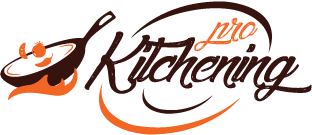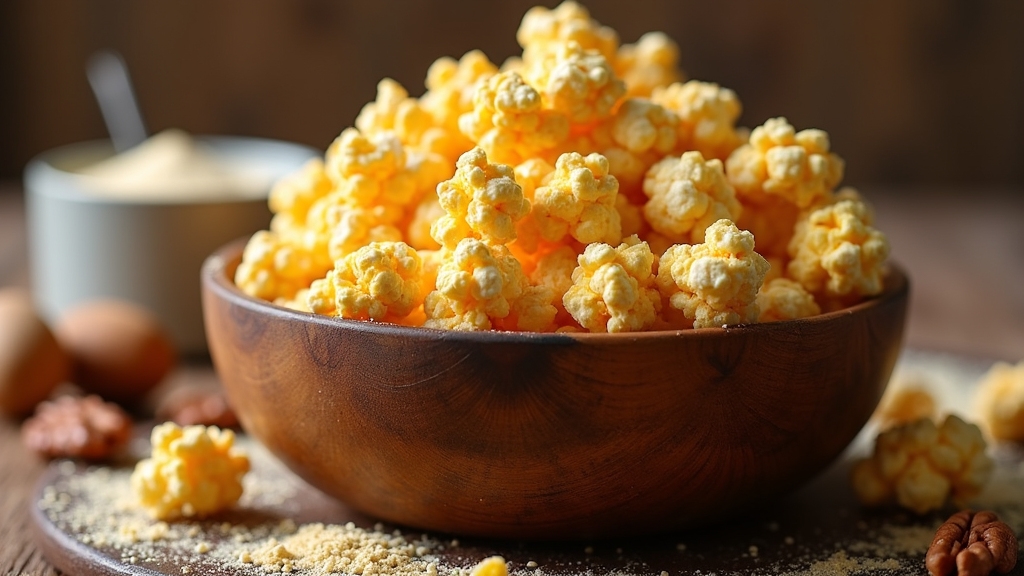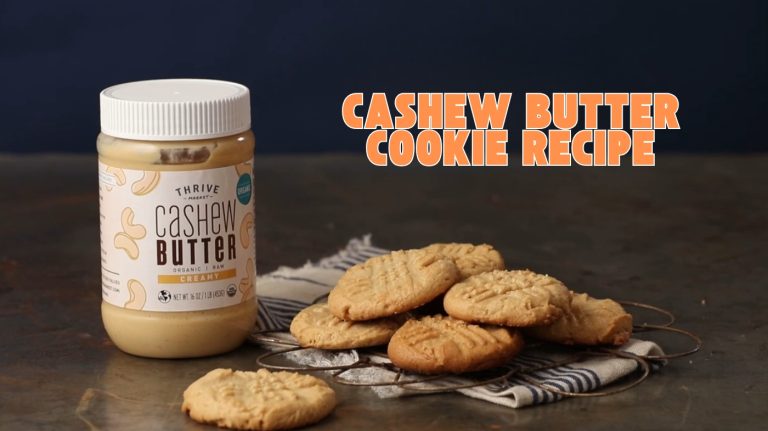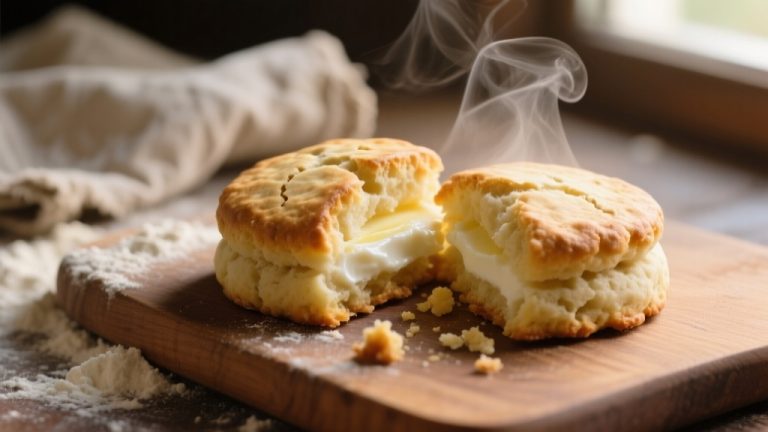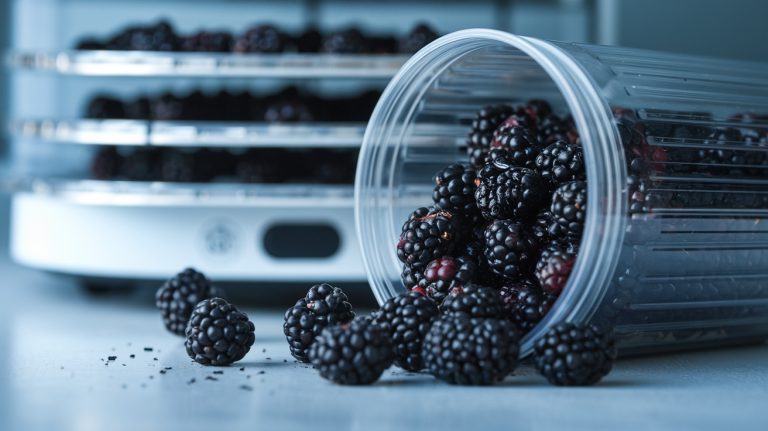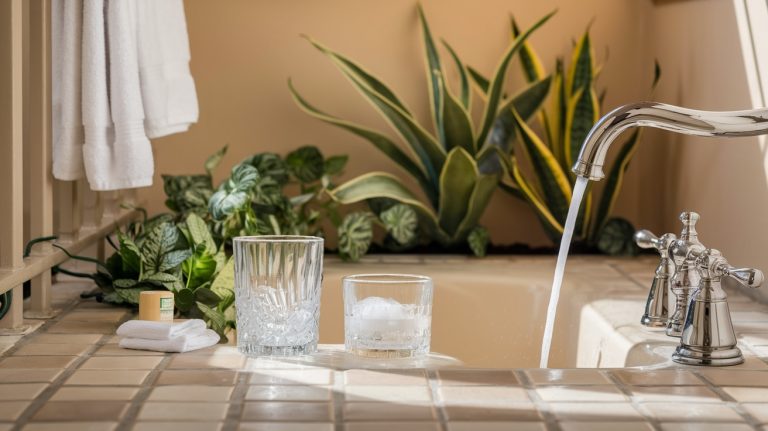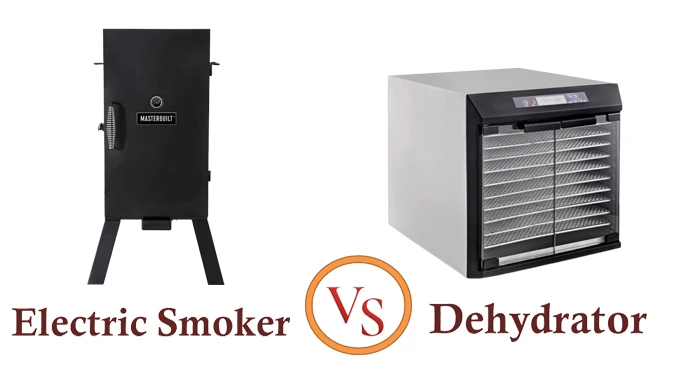Protein Popcorn Recipe: Easy, Healthy and Delicious
You can make protein popcorn by air-popping ½ to ¾ cup kernels, then tossing the warm popcorn with a binder like melted ghee or honey-peanut butter before evenly coating it in your choice of protein powder—whey, collagen, or vegan options work well.
Add seasonings like cinnamon or garlic powder for flavor. This snack offers around 7–9 grams of protein per serving, plus fiber from the popcorn. Keep it fresh in airtight containers and explore various flavors and health benefits as you go.
Key Takeaways
- Use ½ to ¾ cup popcorn kernels or 6 cups air-popped popcorn and coat with protein powder mixed with warm ghee or honey-peanut butter binder.
- Toss popcorn gently in a large bowl with protein powder and seasonings like nutritional yeast, cinnamon, or garlic powder for even, clump-free coating.
- Lightly spritz popcorn with oil or cooking spray before applying protein powder to help it stick without sogginess.
- Flavor options include sweet (vanilla, cinnamon), savory (nutritional yeast, smoked paprika), or spicy (chili powder, black pepper) to customize taste.
- Store protein popcorn in airtight, opaque containers at room temperature for up to five days to maintain freshness and crunch.
Step-by-Step Protein Popcorn Snack Preparation
| Ingredients / Tools | Steps / Actions |
|---|---|
| ½ to ¾ cup popcorn kernels | Pop kernels using an air-popper, stovetop pot, or microwave until fluffy. |
| 2–3 tbsp binder (melted ghee, coconut oil, or honey-peanut butter blend) | While popcorn is warm, drizzle binder lightly to help protein powder stick. |
| 2–4 scoops protein powder (whey, collagen, or plant-based) | Sprinkle gradually, tossing popcorn in a large bowl for even coating. |
| Seasonings (cinnamon, garlic, smoked paprika, nutritional yeast, or cheese powder) | Add desired flavors, tossing again to ensure a balanced taste. |
| Large mixing bowl + spatula | Mix gently but thoroughly to avoid crushing popcorn. |
| Optional baking tray | Bake on 200°F (90°C) for 10 minutes to set coating and keep popcorn crunchy. |
| Airtight container for storage | Keep popcorn fresh up to 5 days or freeze for longer storage. |
Ingredients and Variations
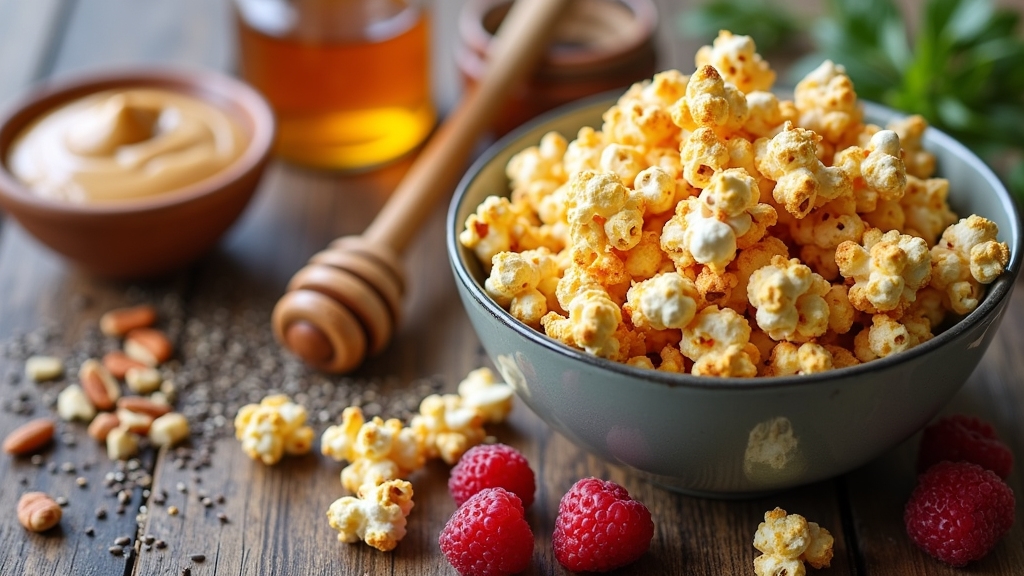
When you make protein popcorn, start with basic ingredients like popcorn kernels, protein powder, cooking oils, and seasonings to create a nutritious base. Use ½ to ¾ cup kernels or about 6 cups of air-popped popcorn.
Choose protein powders such as unflavored whey, collagen peptides, or flavored options like vanilla or chocolate to suit your taste and protein goals. For cooking, coconut oil, ghee, or butter-flavored coconut oil work well to pop or coat the popcorn.
Seasonings like nutritional yeast, garlic powder, salt, and cinnamon add flavor without extra calories. You can customize with cheddar cheese powder for savory notes or combine peanut butter and honey for a sweet, protein-rich coating.
Adjust ingredients to match your dietary needs and preferred flavor profiles. When preparing the popcorn, it helps to preheat the popper on medium heat for 1-2 minutes before adding oil and kernels to ensure even popping.
Nutritional Information Breakdown
When you choose protein popcorn, expect around 7 to 9 grams of protein per serving, which supports muscle repair and satiety.
Calories and fat can vary widely, from low-fat options with about 110 calories to richer versions containing added oils. Popcorn is also a whole grain food high in essential nutrients and fiber, contributing to overall health. Regular maintenance of your nutritional intake can enhance overall wellness.
Don’t overlook the fiber and carbohydrate content—about 4 grams of fiber and up to 22 grams of carbs per serving help keep digestion smooth and energy steady.
Protein Content Range
How much protein does popcorn really provide? Plain air-popped popcorn offers about 1 to 3.36 grams of protein per ounce (28.35 g), with a typical cup containing roughly 1 gram. This protein amount depends on serving size and preparation method, as oil-popped versions vary slightly.
Popcorn is also virtually fat-free, containing only 0.1 grams of fat per cup, which complements its protein and fiber content for a healthy snack option. Incorporating snacks with balanced nutrition and effective shock absorption can support sustained energy levels during long shifts.
While modest, popcorn’s protein contributes to a balanced snack alongside fiber and whole grains. For those seeking more, protein-enriched popcorn products deliver 7 to 8 grams per 30-gram serving by adding protein isolates like milk protein. These fortified options provide roughly 2.5 times the protein of plain popcorn, appealing to fitness-focused consumers.
Calorie and Fat Variation
What makes protein popcorn’s calorie and fat content so variable? It mainly depends on added protein sources like whey, flavorings, and serving size. Using ingredients with a nonstick surface can also affect the fat content by reducing the need for added oils.
Traditional air-popped popcorn has about 110 calories and very low fat per 28 grams. For example, air-popped popcorn contains approximately 1.04g protein per 1 cup serving, highlighting the base protein content before additions protein content.
Protein popcorn ranges between 170 to 270 calories, with fat content varying from 8 to 12 grams per serving.
The extra calories come from protein and fats, where protein adds 4 kcal/g and fat adds 9 kcal/g. Some flavored versions use oils or coatings that increase fat and calories further. Despite higher fat, these products typically have low cholesterol and trans fats.
When choosing, consider that protein popcorn offers a better protein-to-calorie ratio but comes with more fat and calories compared to plain popcorn.
Fiber and Carbohydrates
Why should you pay attention to the fiber and carbohydrate content in protein popcorn? Because fiber-rich popcorn offers about 3.5 to 4.1 grams of dietary fiber per 3-cup serving, promoting digestion, regulating blood sugar, and aiding appetite control. Using natural, food-safe materials in preparation ensures the nutritional benefits are preserved without contamination.
Its complex carbohydrates, 18 to 22 grams per serving, come mainly from whole-grain starches that digest slowly, providing steady energy and reducing glucose spikes. This fiber-carb combination supports cardiovascular health and inflammation reduction.
Plus, the fibrous matrix binds essential minerals like magnesium and manganese, which enhance carbohydrate metabolism and energy production. Popcorn is also a healthy snack option that pops on medium-high heat, making it an easy and natural choice for nutritious snacking.
When you snack on protein popcorn, you get a low glycemic, nutrient-dense option that supports weight management and metabolic health without causing blood sugar surges.
Just remember, added fats or sugars won’t boost fiber but can alter carbs and calories.
Step-by-Step Preparation Guide
To start, you’ll want to master popping techniques, whether using a stovetop, air popper, or microwave, to make certain fluffy kernels without burning.
Next, prepare your protein coating by mixing powders with seasonings for balanced flavor and easy adhesion.
Finally, apply the coating evenly by tossing popcorn in batches, using oil spray if needed to help the proteins stick well.
Popping Techniques Overview
How you prepare your popcorn can make all the difference in texture and flavor when making protein popcorn. Start with a heavy-bottomed pot or popcorn popper to guarantee even heat and prevent burning. Preheat on medium, testing with a few kernels to gauge temperature.
Use oil with a high smoke point like coconut or avocado oil if popping stovetop. Keep kernels moving by shaking the pot or turning a crank to avoid scorching. Slightly vent the lid to release steam and maintain crispness.
When popping slows to a few seconds between pops, remove the popcorn immediately to prevent burning. Avoid overcrowding to ensure full popping. For oil-free options, use an air popper or microwave. Air-popped popcorn works well because it is the base ingredient in this high-protein recipe.
Protein Coating Preparation
Although selecting the right protein base is essential, preparing an effective coating starts with choosing powders that dissolve easily, like whey or plant-based proteins, and combining them with suitable binding agents.
To create a smooth, adhesive coating, gently heat peanut butter and honey or melt coconut oil before mixing in your protein powder. Keep your binder warm but not hot to prevent burning.
Follow these key steps for excellent protein coating preparation:
- Lightly coat warm, freshly popped popcorn with a binder like melted ghee or a honey-peanut butter mix. Using natural ingredients such as peanut butter and honey not only enhances flavor but also adds beneficial protein and natural sweetness.
- Toss popcorn in a large bowl with protein powder evenly, shaking vigorously to avoid clumps.
- Optionally, add spices or sweeteners to enhance flavor and texture complexity.
This evidence-based approach ensures even, tasty protein popcorn coating every time.
Final Mixing Tips
Once you’ve prepared a smooth protein coating, the next step involves mixing it evenly with your popcorn to guarantee every bite delivers consistent flavor and texture. Use a large mixing bowl to give yourself plenty of room for tossing. Selecting the right bowl with non-slip feet can prevent accidents during vigorous mixing.
Lightly spritz the popcorn with cooking spray or olive oil to help the powders stick without sogginess. Toss gently but thoroughly with a spatula or clean hands to avoid crushing kernels.
Add protein powder mixtures gradually to prevent clumping. If you want, shake the popcorn in a covered container for even distribution while keeping it crisp.
Make certain popcorn is at room temperature before mixing to avoid moisture buildup. This step is crucial because the high fiber and low-calorie content of these foods promote fullness and aid weight loss. For baked coatings, use low heat (around 200°F) to set flavors without losing crunch.
Flavor Combinations and Add-ins
Exploring flavor combinations and add-ins lets you customize your protein popcorn to suit any taste preference, whether sweet, savory, or spicy. To enhance sweetness, try protein powders like Sweet Cream or vanilla and add cinnamon or sugar-free chocolate chips for extra depth.
Using medium heat and shaking the pot every 30 seconds ensures your popcorn pops evenly and avoids burning, which preserves the best flavor and texture. Additionally, using oils such as avocado or coconut oil can help seasonings stick better and improve texture without adding many calories.
For savory options, nutritional yeast combined with garlic powder and smoked paprika creates a bold, cheesy flavor while boosting protein. Using unflavored protein powders offers versatility to pair with any seasoning without altering taste. Choosing ingredients that complement each other can enhance the overall balance and flavor profile.
Oils such as avocado or coconut oil help seasonings stick and improve texture without adding many calories.
- Sweet: Vanilla protein powder, cinnamon, monk fruit sweetener
- Savory: Nutritional yeast, garlic powder, smoked paprika
- Spicy: Chili powder, black pepper, avocado oil drizzle
Storage Tips and Serving Suggestions
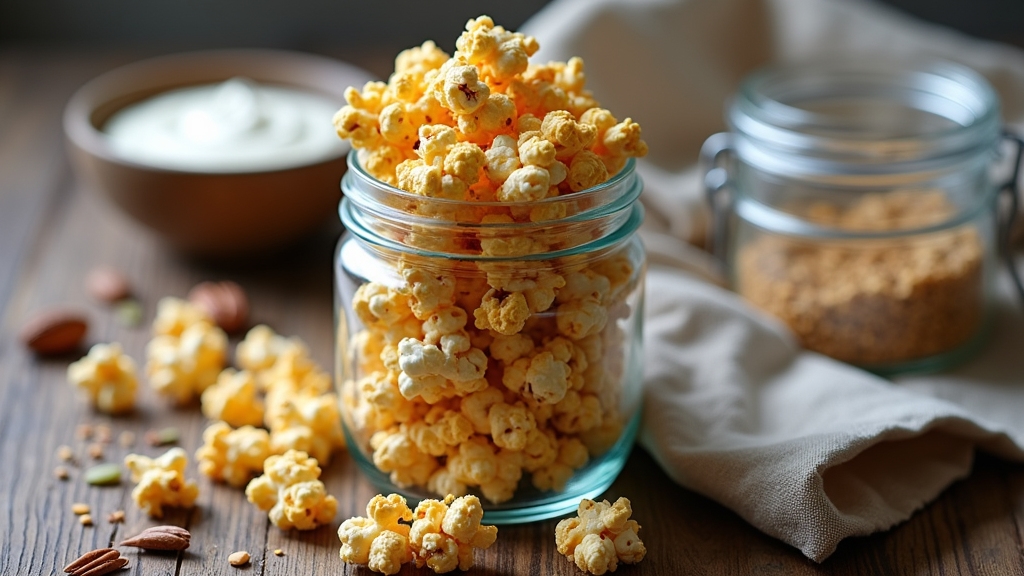
To keep your protein popcorn fresh and crisp, store it in a cool, dry place away from moisture and heat. Use airtight, opaque containers to minimize oxygen exposure and protect against light, preserving flavor and texture. Avoid loosely sealed bags, which let humidity and odors degrade quality.
Using airtight containers like Tightvac can extend the freshness of popcorn up to three times longer by protecting it from outside moisture and heat, making it an excellent choice for storage airtight containers. Additionally, selecting storage solutions that maintain a consistent environment can help prevent loss of flavor and texture.
Popped popcorn lasts up to five days at room temperature, while unpopped kernels can stay fresh for months if kept dry and cool. If you need longer storage, freeze popped popcorn in airtight packaging to extend shelf life safely. Proper storage not only preserves freshness but also reduces waste by extending the edible period.
For serving, enjoy protein popcorn immediately to savor its crunch and flavor. You can customize it with spices like cinnamon or salt, or use it as a topping on yogurt or smoothie bowls for a protein boost and added texture. Enhancing your snack experience with good lighting can also improve ambiance during serving and enjoyment.
Health Benefits and Dietary Considerations
Because protein popcorn offers about 10 grams of protein per serving—more than triple that of regular popcorn—it effectively supports muscle growth and repair, making it a smart choice for fitness enthusiasts.
Protein popcorn delivers over three times the protein of regular popcorn, boosting muscle growth and repair.
Besides protein, it provides fiber, complex carbs, and essential nutrients that aid digestion, sustain energy, and promote heart health. It can also be enjoyed as a versatile snack, serving as a pre- or post-workout option or incorporated into trail mixes and salads for added protein and texture, reflecting its dietary integration. Proper food labeling can help keep homemade snacks like protein popcorn organized and fresh.
When choosing or making protein popcorn, keep these dietary considerations in mind:
- Opt for plant-based protein versions if you’re vegan or allergic to dairy whey.
- Introduce it gradually into your diet to avoid fiber-related digestive discomfort.
- Select low-sodium options to help manage blood pressure.
Frequently Asked Questions
Can Protein Popcorn Be Made Without Any Added Oil or Fat?
Yes, you can make protein popcorn without any added oil or fat. Use air popping or microwave methods to pop kernels without oil.
To help protein powder and seasonings stick, toss the popcorn while it’s hot or use alternatives like vinegar for moisture. Nutritional yeast also adheres well and adds protein and flavor.
This way, you keep your popcorn low-fat, high-protein, and flavorful without needing oil or fat.
What Is the Best Protein Powder Brand for Popcorn Recipes?
You’ll find Blogilates’ Sculpt + Debloat Protein Powder excellent for popcorn, especially in chocolate or sweet cream flavors.
Bulk Nutrients’ WPI, WPC, and Thermowhey are also top choices, offering great mixability and flavor compatibility.
For versatility, vanilla or unflavored powders work well, letting you customize taste.
If you prefer plant-based, try powders combined with nutritional yeast for a savory touch.
Always pick powders low in sugar for healthier snacks.
How Does Protein Popcorn Compare to Other High-Protein Snacks?
Think of protein popcorn as the lean runner in a race of high-protein snacks. You get moderate protein—about 7 grams per serving—less than protein bars or jerky, but with lower fat and calories.
Its fiber content keeps you full longer, unlike some pure protein snacks. Plus, it’s lighter and crunchier, offering a satisfying texture without heavy processing.
It’s a balanced, heart-healthy choice if you want protein with fewer calories.
Can Protein Popcorn Be Safely Frozen for Longer Storage?
Yes, you can safely freeze protein popcorn for longer storage if you keep it in an airtight, freezer-safe container to prevent moisture and freezer burn. Freezing preserves crunch and extends shelf life up to three months without safety concerns.
Just avoid repeated freeze-thaw cycles, and thaw it at room temperature before eating. Keep in mind, some protein coatings may change texture or hardness after freezing, so experiment to find the best method.
Is Protein Popcorn Suitable for Children and Toddlers?
Protein popcorn isn’t suitable for toddlers under 4 due to choking risks and high fiber, which might upset their digestion.
For kids over 4, you can offer it cautiously—make sure kernels are fully popped, avoid added salt or butter, and choose allergen-free protein sources.
Always serve small portions and supervise eating.
For toddlers, safer high-protein snacks without choking hazards are a better choice to support healthy growth and safety.
Make Your Own High-Protein Snack in Minutes
You might think protein popcorn is just a snack, but it’s a smart, satisfying choice that fits easily into your busy day. As you toss those fluffy kernels with your favorite protein boost, you’re not only enjoying a tasty treat—you’re fueling your body with nutrients that support muscle repair and keep you energized.
Coincidentally, this simple mix aligns perfectly with both your health goals and your craving for something crunchy and delicious.
